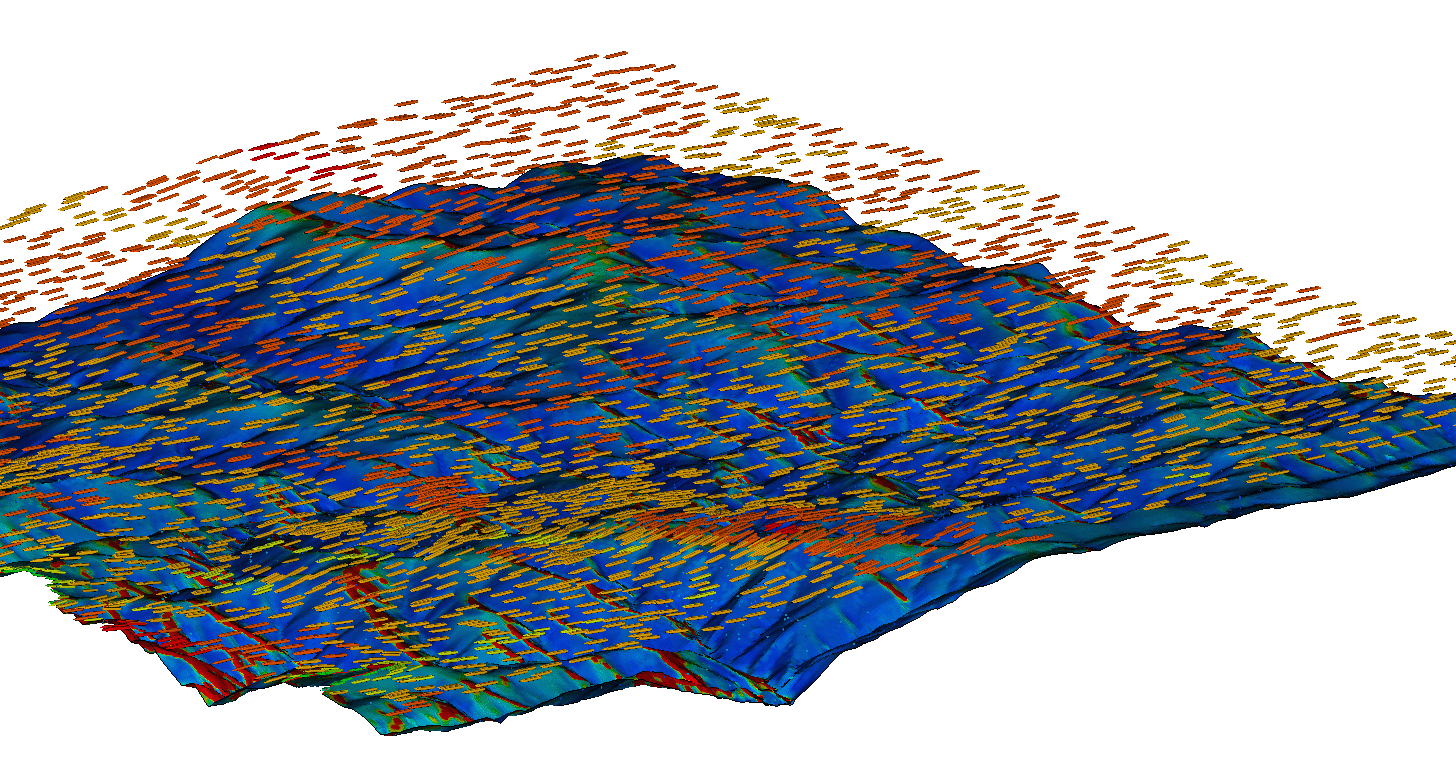Aerodynamic simulation for WRA
BACKGROUND
The CFD (Computational Fluid Dynamics) simulation applied to the wind resource assessment allows obtaining much more detailed results than with the linear calculation, although at an increased cost, especially when working with large surface areas. This way, CFD is an additional tool for carrying out a more complete and accurate assessment, especially for complex surface areas such as ridges or valleys.
The greatest challenge faced by SOLUTE when it comes to developing a CFD tool for calculating the wind resource is reaching a balance between accuracy and calculation time at a competitive price. To achieve this, we must use varied techniques that are applied to the pre-processing of the model as well as to the simulation methods.
CFD (Computational Fluid Dynamics) tools applied to the wind resource assessment (WRA) provides us with more detailed information about the wind potential in a specific area. Based on the statistical results, a simulation of the area being studied is carried out, which provides greater accuracy in terms of locating the towers and determining their capacity for generating electrical power.
This way we are able to better determine the available wind at the wind farm's location for the purpose of positioning the wind turbines in a manner that optimises power generation
RESULTS
A report with the wind resource detailed in the user's area of interest is provided. The information is divided into a number of orientation sectors as requested by the user, up to a maximum of 36.
EXPERIENCE
Develop our own CFD tool for the wind resource, FUROW-CFD, which has been under development since 2012 for customers from different sectors, wind park developers and operators.
The user provides the geometry and geographical location of the site whose wind resource is to be studied and, based on this, the linear wind resource is calculated, information that will be used to start the CFD simulation.
METHODOLOGY
Initially, the user supplies the geometry and geographic location of the place where they wish to study the wind resource and based on this, we calculate the linear wind resource, which is used to start the CFD simulation. Then, the factors required for the simulation are generated such as the coordinates and land elevation, roughness, atmospheric stability, the points of interest where to measure the fluid figures and the result of the linear resource.
Once this is completed, the geometry of the domain that is going to be calculated is prepared, for which we resort to what is known as edging the terrain, a task consisting of creating a region around the area of interest where the surface is slightly modified. This way we can avoid locations where numerical convergence is difficult, without falsifying the results, since the area being studied is not affected.
The simulation, as explained above, is repeated for several sectors; in other words, for different incident wind directions, up to a maximum of 36. For each one of the sectors, a different edging is carried out and then we proceed with the meshing. First, the domain is roughly meshed, using the result of the linear resource as boundary condition and obtaining a first simulation that can be easily solved. In the second step, the mesh is refined in the XY plane and another simulation is carried out, using the results of the first one as the basis, to obtain a result that is more accurate and of easy convergence.
Several mechanisms are responsible for providing the convergence of the model, without losing accuracy in the results. The main one is a low pass filter that eliminates the highest frequencies of the transient phenomenons, which are negligible in a stationary simulation such as the wind resource.
Others
Artificial Intelligence
Discipline based on the construction of computational artefacts that learn from experience through data use and that is applied to a variety of problems.
Solar
Structural systems design for PV plants
Structural systems design phase analysis for calculating the generation of solar energy using photovoltaic panels in demanding environments such as with winds or earthquakes.
